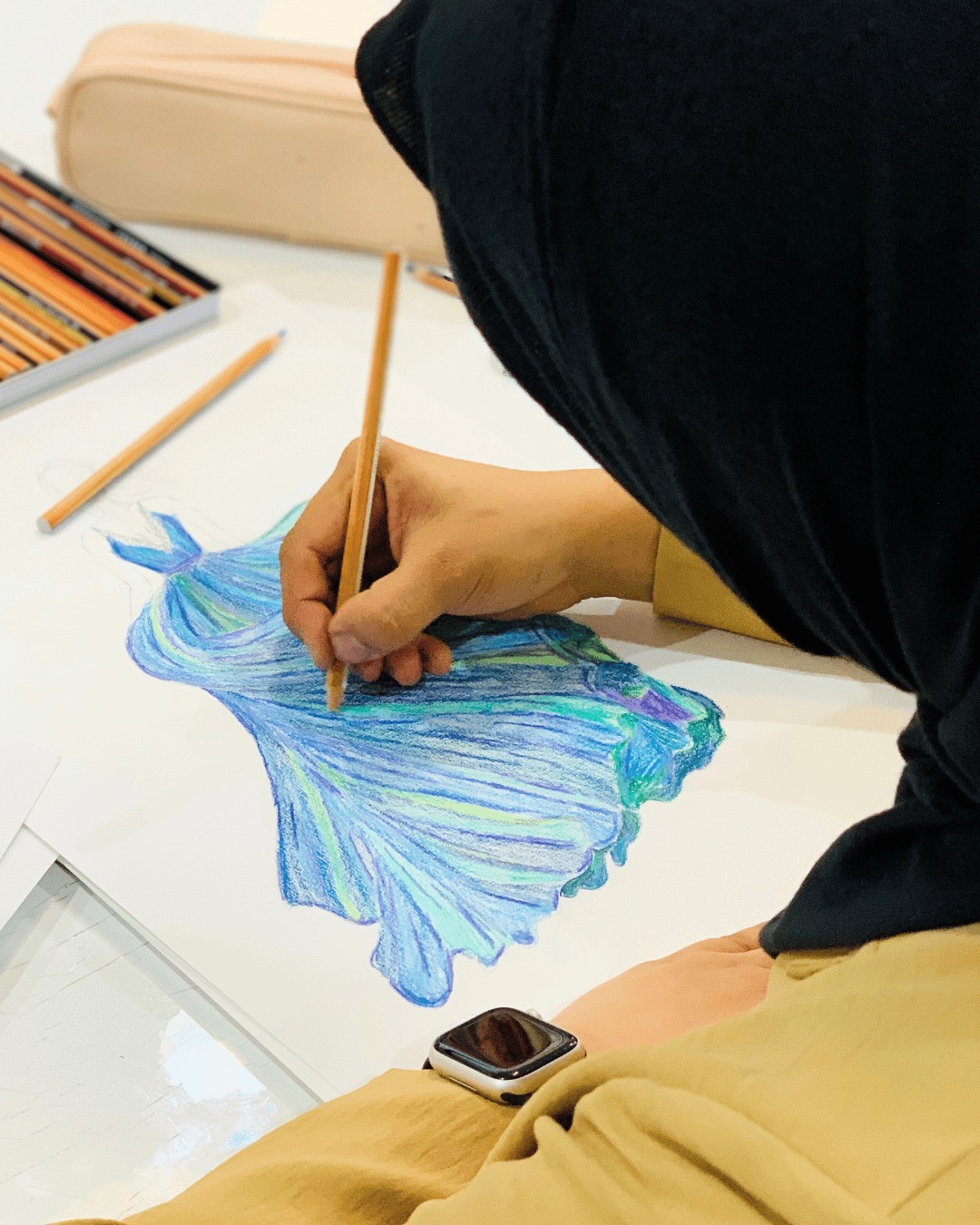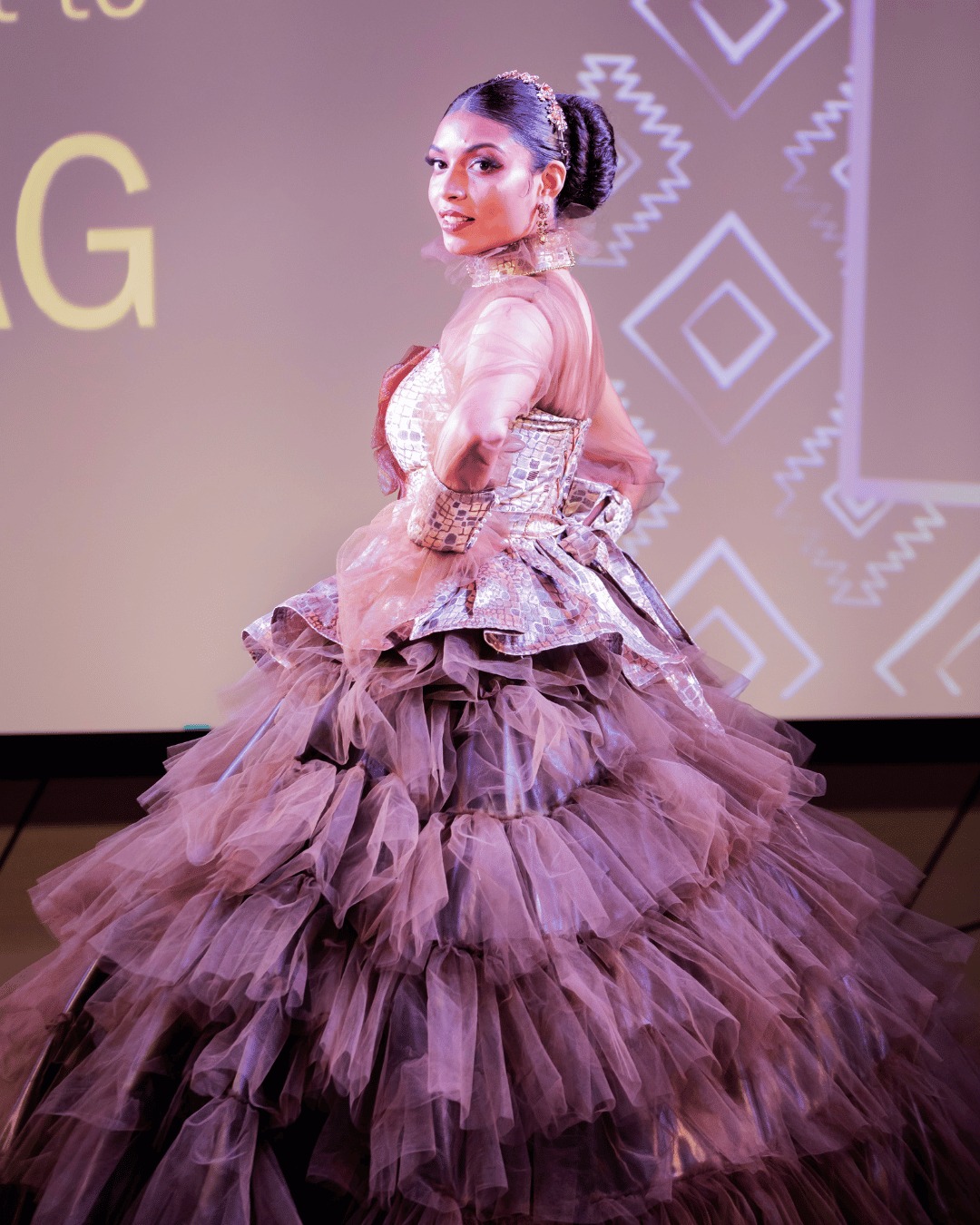
Introduction to the program
The Fashion Industry is dynamic and challenging, offering rewarding careers to those individuals who are energetic, flexible, innovative and creative. The Professional Diploma in Fashion Design is specifically designed to develop a breadth of understanding of the fashion industry and to provide a broad foundation for students from which they can determine which branch of the industry their personal talents are most suited to. LCA has offered the program for several batches now and has produced several award winning students.
Course Objectives:
- To develop talent among students in the area of designing arts
- To prepare the students for an entry level position into the clothing industry
- To facilitate use of technology in designing expression
- To provide a career programme encouraging self-employment
Teaching Methodology
Emphasis is placed on hands on training and practice. The sessions are 70% hands on practical assessments and 30% spread on lectures and research practice.
Entry Requirements
Admission into the Fashion Design program is open to students of all nationalities with respect to the submission of the following requirements:
- Copy of the high school graduation certificate or equivalent from a recognized institution. These may include one of the following:
1. High School Certificate
2. O’ levels (IGCSE/GCE)
3. GED (General Education Diploma) - Complete Application form with 3 color passport – photographs
- Clear passport copy or other photo identity copy
- Students must have a good command of spoken English and own a laptop
Mature students: Students above the age of 21 may enter directly into the program.
Membership: Students can now apply for Student Memberships the British Institute of Interior Design, UK at no cost.
Syllabus Outline
Students will be encouraged the investigation of materials and experimentation with a variety of media, through personal enquiry and discovery. The unit allows learners to develop research techniques through exploring and developing design ideas.
To achieve this module the student must:
1 Explore and experiment with the formal elements of fashion design through illustration
2 Develop and expand visual awareness imaginatively and creatively
3 Analyse and interpret visual research effectively
4 Adapt ideas for creative exploration in work efficiently and imaginatively
Students will receive an introduction to the technical skills required in pattern and garment
production. Learners will learn the fundamental pattern construction processes required and will
apply these to produce patterns for their own design work. Learners will learn about
manufacturing processes and how to apply these to produce garments.
To achieve this module the student must:
1 Apply pattern construction processes to interpret garment designs effectively
2 Apply garment manufacturing processes to interpret garment designs effectively
3 Use technologies and associated equipment correctly for pattern and garment manufacture
4 Evaluate the use of pattern construction and garment manufacturing processes
This unit will introduce learners to a range of industrial equipment used in the clothing industry
and enable them to develop techniques required for garment manufacture. The unit provides
essential skills and understanding of the basic principles required to produce sample garments.
To achieve this module the student must:
1 Apply understanding of industrial equipment to develop manufacturing skills
2 Construct an accurate calico toile for an identified garment
3 Produce a well-finished garment accurately and effectively
4 Evaluate use of industrial equipment and the finished garment.
This unit will introduce learners to the principles of pattern drafting through block construction and pattern manipulation. Having completed this unit successfully, learners will have the basic skills required to progress to creating patterns from their own and others ‘working drawings.
To achieve this module the student must:
1 Create a set of basic blocks
2 Develop and expand understanding of dart and seam manipulation
3 Produce a full scale pattern from a working drawing
4 Evaluate the full scale pattern
This unit gives the learner an understanding of the relationship between fashion marketing and design and the importance of these two elements to business strategy and as a means to competitive advantage in an industry characterised by change. The unit will introduce fashion marketing theory and practice and their relevance to the fashion industry.
To achieve this module the student must:
1 Analyse and interpret the basic principles of marketing in a fashion context
2 Gain awareness of the environmental factors which influence the fashion industry’s marketing policies
3 Investigate, analyse and evaluate marketing strategies adopted by the industry
4 Apply the principles of fashion marketing planning.
In this unit, learners will have the opportunity to design and realize their own fashion collection. This gives learners an appreciation of the role of the designer and an understanding of different market sectors, production methods and their related constraints. The unit integrates a variety of
complex skills and knowledge to realize innovative and complex designs.
To achieve this module the student must:
1 Design an innovative collection to a self-identified theme
2 Develop a range of garments using information from fashion predictions and trends to inform
design solutions
3 Demonstrate synthesis of knowledge, skills and understanding to realize designs
4 Present, analyse and evaluate their own work.
The unit aims to develop an understanding the relationship between textiles and design. It allows the students to explore creative pathways through textiles and the use of textiles in the design process.
To achieve this module the student must:
1 To identify textiles through a basic understanding of fabrics and textile construction methods.
2 To develop an understanding of textile properties and their appropriate use.
3 To encourage the students to explore surface decoration and knit wear as a source of design inspiration and development
The history of fashion covers women‘s, men‘s, and children fashion and the influence of and changes in fashion from the 15th century to the present day.
Areas to be covered:
Historical development, Sources of inspiration, Fashion Identification, Psychological impact, Designers, Sources of information, Fashion Industry










